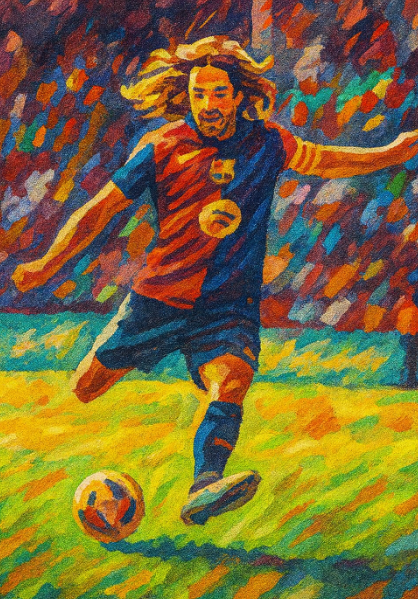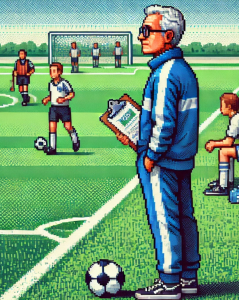
The Tactical Shift That Redefined Spanish Soccer
If you followed LaLiga in the early 2010s, you’d recognize a pattern: nearly every team lined up in the classic 4-2-3-1. Double pivots in midfield, a creative “10” pulling the strings, and wingers tucking inside. But something dramatic happened between 2012 and 2021. Coaches started abandoning the 4-2-3-1 for the more compact and balanced 4-4-2.
According to a decade-long analysis by González-Ródenas and colleagues in The Journal of Human Kinetics, LaLiga teams didn’t just tweak their shapes—they evolved their tactical DNA. After analyzing 3,420 matches across nine seasons, the researchers found a clear shift: from formations packed with midfielders to ones emphasizing paired forwards and defensive structure.
Why It Matters
Formations are more than numbers on a chalkboard—they dictate rhythm, space, and workload. They determine whether your fullbacks bomb forward or your striker is left stranded. For coaches at every level, understanding how these patterns evolve in elite soccer helps refine how we train, select players, and build teams.
The takeaway? Spanish soccer—long associated with possession and artistry—has grown more pragmatic, flexible, and physically balanced.
What the Research Found
- The 4-2-3-1 Was King—Then Declined. Between 2012 and 2016, this setup dominated LaLiga. Coaches favored its balance between defense and attack, using two holding midfielders to protect the back line while allowing creative freedom ahead.
- The 4-4-2 Took Over. By 2017, more teams shifted to 4-4-2. This wasn’t nostalgia for classic English football—it was adaptation. The shape offered compactness, lower physical demands, and defensive security. Wingers tracked back, reducing open-space exposure and helping teams defend as a tight unit.
- Top Teams Went 4-3-3. Champions and Champions League qualifiers like Barcelona and Real Madrid used the 4-3-3 more than any other team. Why? Their technical superiority allowed for riskier, possession-heavy football that stretched defenses and relied on short-passing mastery.
- More Forwards, Fewer Midfielders. The study noted a steady decline in five-midfielder setups and a rise in two-forward formations. In other words, attacking partnerships are back in fashion.
- Formation and Performance Are Linked. Statistically, teams using a 4-3-3 earned more points on average, while those relying on 4-2-3-1 or 5-defender systems tended to struggle. Defensive conservatism might protect the goal, but it limits offensive creativity and points over the long haul.
Lessons for Coaches at Every Level
These trends in elite soccer hold powerful insights for youth, amateur, and semi-professional coaches. Here’s what you can take from the pros:
1. Simplify for Cohesion
The 4-4-2 works because it’s intuitive. Lines stay compact, player roles are clear, and transitions are smoother. For developing teams, especially those under time constraints, this shape can foster structure and defensive confidence.
2. Use the 4-3-3 to Stretch the Game
If your players have strong technical ability—or you’re building toward a possession-based philosophy—consider the 4-3-3. It encourages width, passing triangles, and pressing from the front. Think of it as a “learn-to-attack” system.
3. Beware of the 4-2-3-1 Trap
The 4-2-3-1 looks balanced on paper, but it often demands a physically dominant “6” and a tactically brilliant “10.” Without those anchors, the shape can collapse under pressure. It’s best used when your squad can execute complex transitions.
4. Experiment and Observe
LaLiga’s evolution shows that rigid systems don’t last. The best coaches adapt formation to fit their roster, not the other way around. Use analytics, GPS data, and match film—even at the youth level—to determine if your shape aligns with player energy and game flow.
5. Balance Artistry with Efficiency
Spanish teams found success blending creativity with compactness. Encourage expressive play but anchor it in disciplined spacing. A fluid front three still needs organized defensive lines behind it.
Connecting the Dots: The Broader Shift
The transition from 4-2-3-1 to 4-4-2 in LaLiga mirrors broader global trends in soccer tactics. High pressing, shorter passing sequences, and versatile players have reshaped how space is used. The modern game rewards adaptability—teams switch formations mid-match, players swap zones, and even defenders initiate attacks.
For coaches, this means training players to understand shape dynamically, not memorizing fixed positions. A formation is now a living framework—flexible enough to morph between defense and attack seamlessly.
Your Turn to Kick It Off
This research paints a clear picture: tactics evolve because soccer evolves. The question is, how do we apply that evolution on our own pitches?
- How would your team adapt if you shifted from a 4-2-3-1 to a 4-4-2 next week?
- What training drills could help your players learn spatial discipline without stifling creativity?
- Could tracking your team’s formations and results reveal patterns similar to LaLiga’s?
The beauty of soccer is that the tactics of Real Madrid or Sevilla can inspire a U13 coach in Ohio—or a weekend league manager in Lagos. Tactical evolution isn’t just for the pros; it’s a roadmap for everyone chasing better football.



